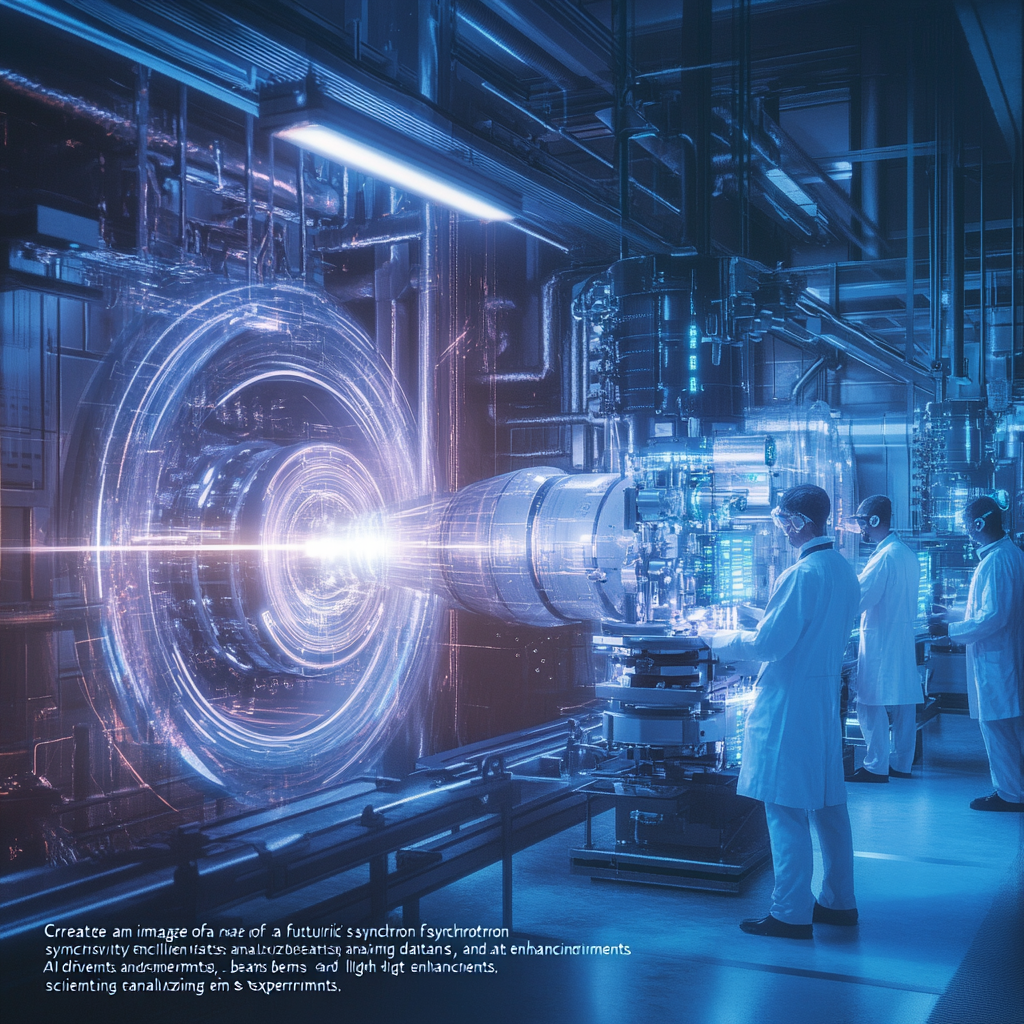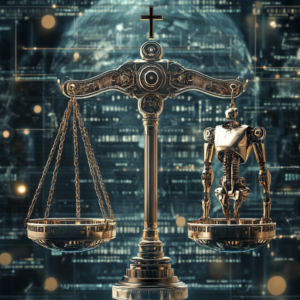
“AI and ML: Transforming Synchrotron Science at NSLS-II”
AI/ML’s Bright Future at NSLS-II: Revolutionizing Synchrotron Science
In the bustling world of scientific discovery, the National Synchrotron Light Source II (NSLS-II) at Brookhaven National Laboratory is setting the stage afire with groundbreaking innovations. Buckle up, because advances in artificial intelligence (AI) and machine learning (ML) are not just making waves; they’re creating a tsunami of change that will redefine synchrotron science as we know it.
Artificial Intelligence, Real Solutions
Illustrated against the backdrop of one of the world’s most advanced synchrotron light sources, AI and ML are in a genuine race against time, making monumental strides in efficiency and productivity. Think about it: those massive data streams generated during experiments were once a daunting task for even the most seasoned scientists. Enter AI and ML—these technologies are not just tools; they’re the superheroes of data management, swooping in to analyze mountains of information faster than you can say “data overload!” With real-time analysis capabilities, these smart systems are as vital as preparing samples for beam time and figuring out how to get the most from experiments.
Streamlining Operations and Data Analysis
Automation and Robotics
Let’s talk automation. Gone are the days of scientists sitting idly by as tedious, repetitive tasks eat up their precious beam time. With AI-powered innovations bobbing up like delightful corks on a sunny day, we see AI agents powered by supervised ML models monitoring experiments around the clock like tireless sentinels. These agents are the ultimate gatekeepers, spotting anomalies and flagging data quality in the moment. Equipment failure? Sample damage? A simple pounce and they’re on it! This means less time fretting and more time discovering—precisely the kind of efficiency researchers have been dreaming about.
Digital Beamline User Assistants
But wait, there’s more! Imagine walking into NSLS-II and being greeted by an AI chatbot that knows more than you do—about safety protocols, data management, and the convoluted proposal system. Enter the digital beamline user assistants, powered by large language models (LLMs) that are eager to help. They don’t just answer questions; they synthesize large volumes of information, pulling out common themes to cater to the needs of the user community. It’s like having a personal assistant, minus the coffee runs!
Data Science for Beamline Data
Unsupervised Learning
Now onto the data detectives—unsupervised learning techniques are paving the way for real-time data monitoring and analysis. Can you imagine software that checks out large datasets and identifies trends without a teacher? Well, welcome to the future! Methods like non-negative matrix factorization and hierarchical clustering are adept at recognizing subtle material changes—like phase shifts due to temperature—which might otherwise go unnoticed. That’s like a concert pianist being able to hear the faint notes of a hidden melody that others miss!
AI-Driven Analysis
And let’s not forget the X-ray crystallography companion agent (XCA). With the zing of technological prowess, this cream of the crop AI agent taps into an ocean of synthetic datasets to create a probabilistic model. It's the Sherlock Holmes of experimental data, piecing together clues in real-time. This not only accelerates analysis but hones accuracy as it learns, adjusting its predictions based on structural databases—no more overconfidence that leads to blunders!
Agent-Driven Science
Reinforcement Learning
Now, let’s get to the good stuff—reinforcement learning. Imagine AI models interacting with real or simulated environments, learning to optimize data collection under pressure. Enter the “BadSeed” agent, which, thanks to reinforcement learning, is twice as efficient at gathering critical structural data compared to your garden-variety data collection plans. That’s science getting an upgrade beyond your wildest dreams!
Autonomous Experiments
Gone are the days of scientists manually wrangling experiments: the NSLS-II team has rolled out the red carpet for fully autonomous, multimodal AI/ML-driven experiments! Picture this: measuring a single sample library across two separate beamlines simultaneously. It’s a scientific double feature that showcases the raw power and potential of AI to usher in new methodologies that could redefine experimental frameworks.
The Future of Human-AI Collaboration
Human-AI Interfaces
Peering into the crystal ball of beamline science, the seamless integration of human and AI interfaces appears inevitable. It’s like designing a user-friendly interface for a smartphone; AI will classify data, recommend measurements, and interact with researchers effortlessly, transforming the way science is done. This future will empower scientists, even those who wouldn’t know a neural network from a toaster, to interface with AI and glean insights that were once reserved for the tech-savvy elite.
Bluesky Control System
And at the heart of these Cyrillic ballet of innovations? The Bluesky control system—a slick, open-source masterpiece designed for collecting, managing, and analyzing data. Bluesky is all about flexibility and adaptability, creating a smooth highway for AI tools to merge into the scientific framework seamlessly. With a client-server architecture and programming language-independent interfaces, collaboration among experiments becomes as breezy as a Sunday drive!
Conclusion
So, what does all this mean for the future of synchrotron science? The marriage of AI and ML at NSLS-II isn’t just a passing fancy; it’s a clarion call for a revolutionary change in how we approach scientific research. By automating the mundane, turbocharging data analysis, and encouraging a collaborative spirit between humans and machines, researchers are now tackling high-complexity challenges that were once seen as insurmountable.
As we move further into this brave new world, the synergy between man and machine is set to flourish, pushing the boundaries of what we can achieve in scientific exploration. It’s a bright future illuminated by the brilliance of AI and ML, and trust me, you don’t want to miss out on the groundbreaking discoveries that await.
Want to stay up to date with the latest news on neural networks and automation? Subscribe to our Telegram channel: @ethicadvizor. Get ready, because the scientific journey is just beginning!

